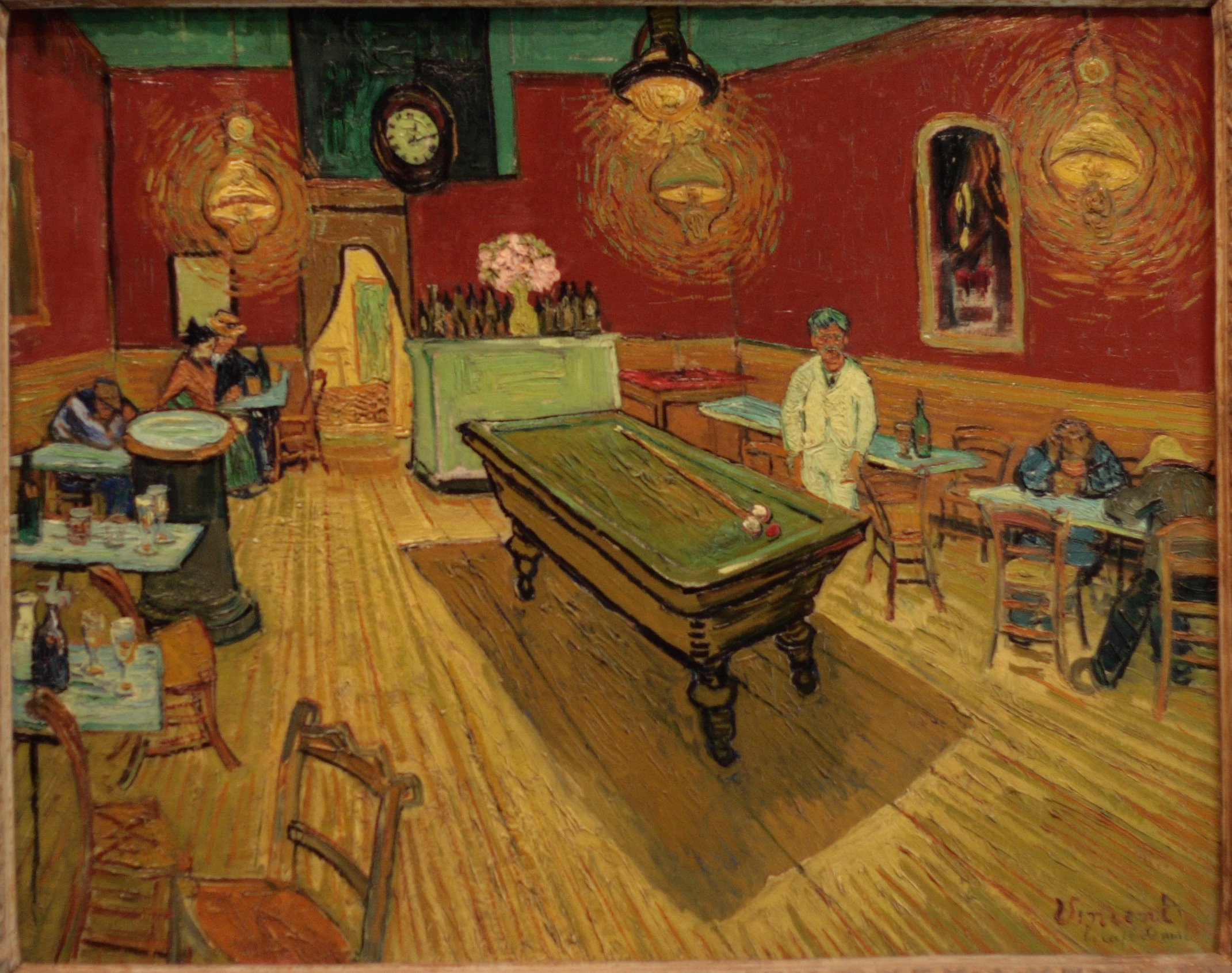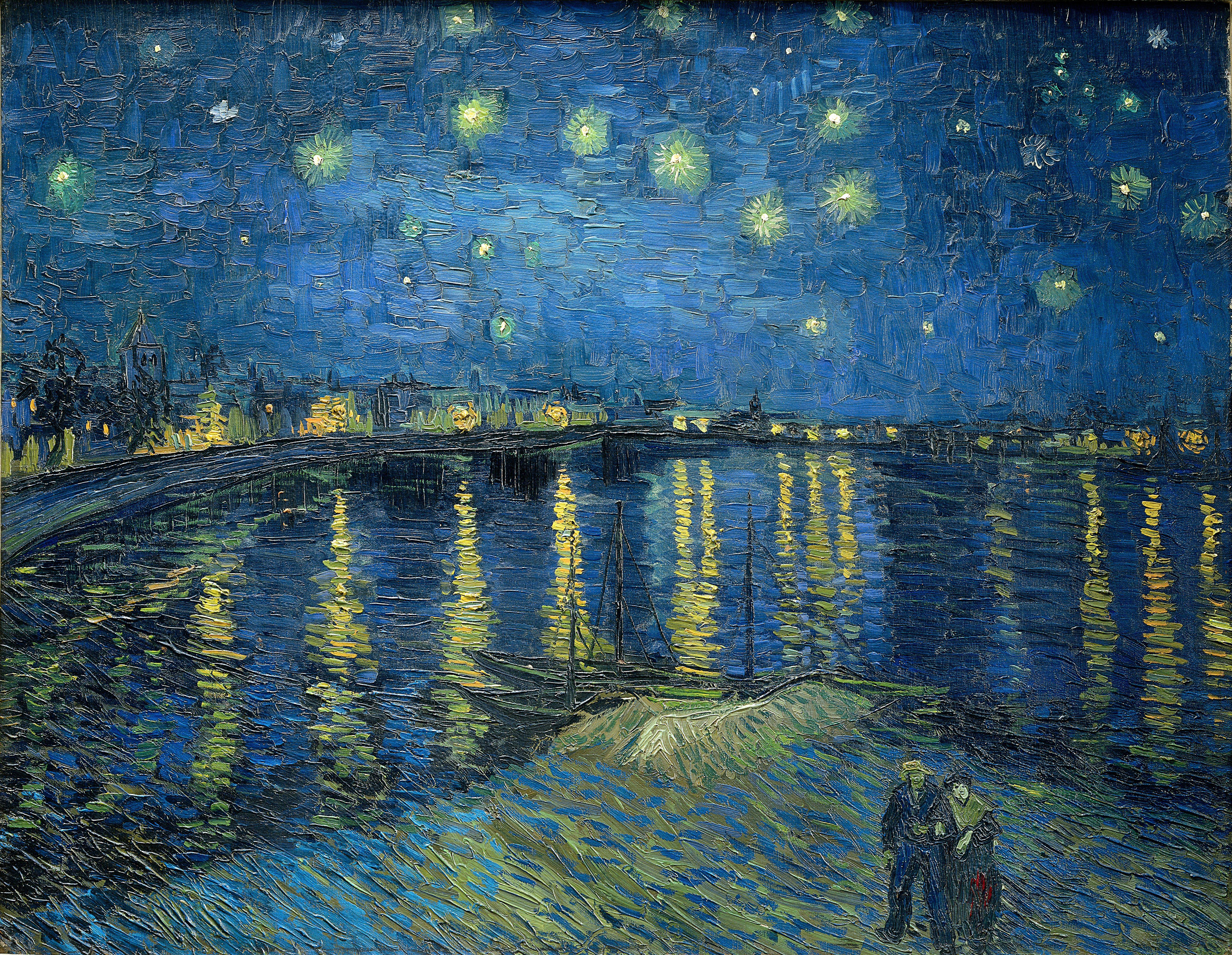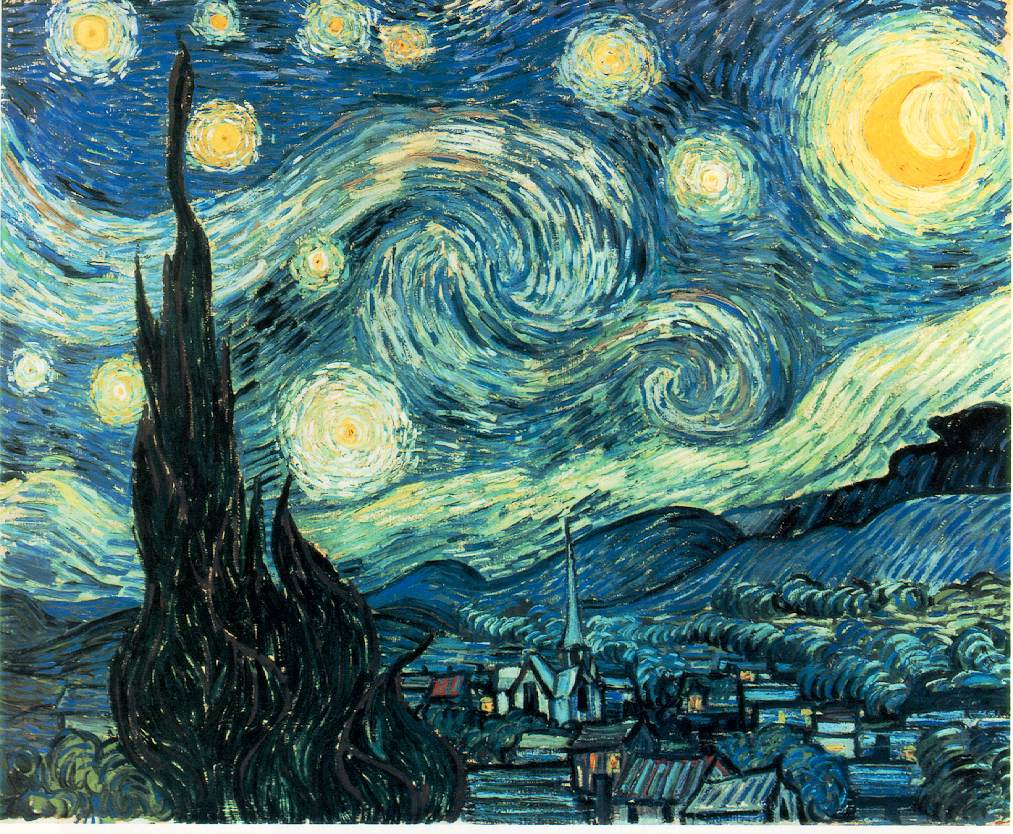Friday, July 6, 2012
Van Gogh and the Colors of the Night
The Museum of Modern Art, in collaboration with the Van Gogh Museum, Amsterdam, presented Van Gogh and the Colors of the Night, the first exhibition to examine Vincent van Gogh’s lyrical view of the night through nocturnal interiors and landscapes, which he often combined with other longstanding themes of his art—peasant life, sowers, wheatfields, and the encroachment of modernity on the rural scene.
This exhibition included 23 paintings and 10 works on paper from all periods of Van Gogh’s career, as well as a selection of his letters and examples of the rich literary sources that influenced the artist’s work in this area by writers such as Hans Christian Andersen, Jules Michelet, and Emile Zola.
Van Gogh and the Colors of the Nightwas organized by Joachim Pissarro, Adjunct Curator, Department of Painting and Sculpture, The Museum of Modern Art, and the Bershad Professor of Art History and Director of the Hunter College Galleries, Hunter College, New York; Sjraar van Heugten, Head of Collections, Van Gogh Museum, Amsterdam; and Jennifer Field, Curatorial Assistant, Department of Painting and Sculpture, The Museum of Modern Art. It was on view at MoMA from September 21, 2008, to January 5, 2009, and then traveled to the Van Gogh Museum in Amsterdam, where it will be on view February 13 to June 7, 2009.
Vincent van Gogh (Dutch, 1853–1890) depicted and reflected upon the night throughout his career. Painting in the dark was a challenge in the late nineteenth century, particularly for an artist who relied merely on his powers of observation; Van Gogh refused to be bound by this alternative to work strictly from observation, or from imagination. Instead, he relied on both. Thus, he was also an artist for whom the real was intertwined with the symbolic, and who set out to capture the spiritual qualities he sensed in the world around him. It was during the night hours that his experiments with imagination, memory, and observation, altogether went the farthest.
Mr. Pissarro said, “Van Gogh’s night scenes offer rich layers of significations and associations. Some show the strong relationship that he perceived between the cycles of nature and those of rural labor. Others evoke poetic associations of the evening with either the vagaries of life in modern times or with profound metaphysical questions. Van Gogh’s works and letters not only carried on the art historical tradition of twilight and night scenes but also reflected how his thoughts were influenced by abundant literary sources. The powerful technical innovation— Van Gogh’s signature—that he applied to capture the effects of dark and light proved to be a rewarding field of investigation.”
The exhibition was divided into four sections. “Early Landscapes” features Van Gogh’s earliest landscapes at dusk, painted in 1883-84. “Peasant Life” refers to Van Gogh’s study of peasants in Nuenen in the southern Dutch province of Brabant, and features, most notably, The Potato Eaters (1885). The third section, “Sowers and Wheatfields,” addresses his interest in the sowing of wheat, which formed the basis of many of his works, including The Sower (1888). The last section, “Poetry of the Night,” focuses on Van Gogh’s lyrical view of the night and is divided into two parts: “The Town,” which features works such as The Night Café (1888), which will only be shown in the MoMA presentation, and The Starry Night over the Rhône (1888); and “The Country,” which centers on Van Gogh’s iconic painting The Starry Night (1889) from MoMA’s collection.
Early Landscapes
Van Gogh did not pursue a career as an artist until 1880, when he was 27 years old. Many of his earliest paintings portray the effects of aerial light, particularly around sunset, on the landscape of Brabant, the region in the southern Netherlands where he was born.
In these works, including Lane of Poplars at Sunset (1884)
and Evening Landscape (1885), the artist aligned himself with the centuries-old traditions of night scenes and Dutch landscape painting, typified by seventeenth century masters such as Rembrandt and Jacob van Ruisdael, respectively. In the middle decades of the nineteenth century, nocturnal landscapes were favored by the Barbizon painters in France, such as Charles Daubigny and Jules Dupré, whom Van Gogh greatly admired. At first a devotee of their effets de soir, or “evening effects,” Van Gogh soon took up the challenge of fashioning his own approach and modernizing this genre with his striking use of color and rhythmic brushstroke.
Peasant Life
Van Gogh believed that rural laborers stood closer to nature than other people, and were more strongly linked to the cycles of life. Between 1883 and 1885, while living with his parents in Brabant, he made a series of paintings and drawings describing the humble life of the peasants there.
One of these was The Potato Eaters which depicts a family gathered around their evening meal. His first significant interior night scene, it is also widely accepted as his first major canvas. To make it he returned regularly to the home of a local family and sketched them at dinner. In 1885, he included a sketch of the scene in a letter in his brother Theo. Before starting the final composition, Van Gogh made one large study, from which he printed a lithograph, also on view, and a series of studies of figures and heads.
The Potato Eaters was immediately followed by The Cottage (1885), a painting of one of the region’s modest rural homes, again depicted in the evening. Van Gogh’s affection for such dwellings, which he called “human nests,” would be evident in his work until the end of his life.
Sowers and Wheatfields
In February 1888, Van Gogh moved to Arles, a Provençal town in the South of France. Here he adopted a more vibrant palette, moving away from closely representational painting toward a more poetic, associative approach.
He was fascinated by the effects of the southern light at different times of day, and in several paintings he combined scenes of peasants sowing or harvesting wheat with the cool tones of twilight, or with the ambers and golds of a large sun nearing the horizon, like in the various versions of The Sower.
For Van Gogh, the endless flow of the days and the cycle of sowing and harvesting functioned symbolically as metaphors for the eternal cycle of life and death. It was in working through this theme that he began to come closer to his mature style, honing his use of complementary colors, such as violet and yellow, and embracing the stylistic elements of Japanese woodblock prints, which he had viewed with enthusiasm in Paris over the previous two years.
Poetry of the Night
The Town:
Van Gogh looked hard at the world around him, and his depictions of night extended to the afterdark entertainments of urban life, such as cafés and dance halls.
In The Night Café, for example, he observed the listless patrons of a bar underneath the harsh glare of gas lamps at night. Despite their obvious differences, he connected this work to his earlier painting The Potato Eaters , an equally ambitious rendering of a complex figure arrangement in a nocturnal interior. Yet he was still preoccupied with nature, and after finishing The Night Café he wrote to his sister Wil, “I definitely want to paint a starry sky now.” He had expressed this aspiration in letters throughout 1888, but the painting had not yet materialized. Eventually he had the idea of setting up his easel under the outdoor gas lamps of an Arles café, which lit the canvas enough for him to paint a street scene below twinkling stars.
Twelve nights later, emboldened by the results of this endeavor, Van Gogh embarked on his seminal painting The Starry Night over the Rhône, which features a vast expanse of night sky in the upper half of the canvas.
The Country:
Van Gogh’s interest in working from both observation and imagination fused in the night scenes he made in 1889 and 1890.
Among these was The Starry Night, the culmination of his intense effort to conquer the problems of using color to depict darkness, as well as to register the spiritual and symbolic meanings that he saw in the nighttime hours. The Starry Night, has become an iconic image, an emblem not only of Van Gogh’s own work but also of modern art in general. It shows a fantastical sky above a town and hills lit only by the stars and moon—which, however, are vibrant and alive. The little village and the hills beyond were inspired by Saint-Rémy and the nearby Alpilles mountain range, but were not modeled on them closely, and the cypress trees and the thickly painted, swirling astral sky stemmed from Van Gogh’s imagination. In the open night skies Van Gogh perceived formidable forces of nature, capable both of providing consolation amid life’s daily adversities and of evoking eternity.
PUBLICATION:
Van Gogh and the Colors of the Night features essays by Joachim Pissarro, Sjraar van Heugten, Chris Stolwijk Geeta Bruin, Jennifer Field, and Maite van Dijk. Van Gogh Museum / The Museum of Modern Art, 160 pages, 115 illustrations.











